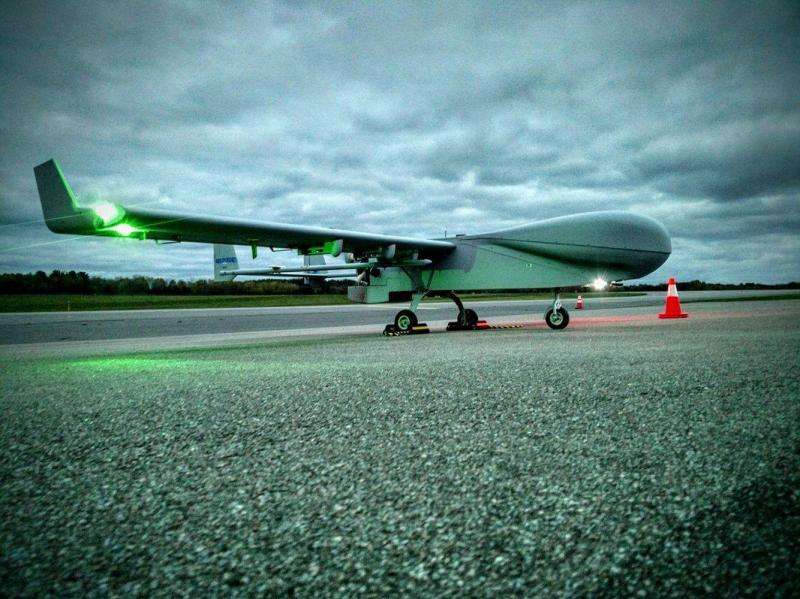The unamanned ArcticShark takes to the skies for atmospheric data

A new window on the Arctic region is opening up, thanks to scientists at the Department of Energy's Pacific Northwest National Laboratory and several other DOE laboratories.
The ArcticShark, an unmanned aerial system designed to collect the most sophisticated atmospheric data ever in the Arctic, recently took to the skies for testing in Pendleton, Ore. The system is managed by the Atmospheric Radiation Measurement Climate Research Facility, a DOE national scientific user facility. The aircraft will be equipped with more than a dozen instruments designed to help scientists understand one of the most sensitive regions of the planet.
The ArcticShark has a 22-foot wingspan, can carry up to 100 pounds of instruments and can climb to 18,000 feet. It's scheduled to be deployed by DOE next year for use by scientists around the world.
Provided by Pacific Northwest National Laboratory


















